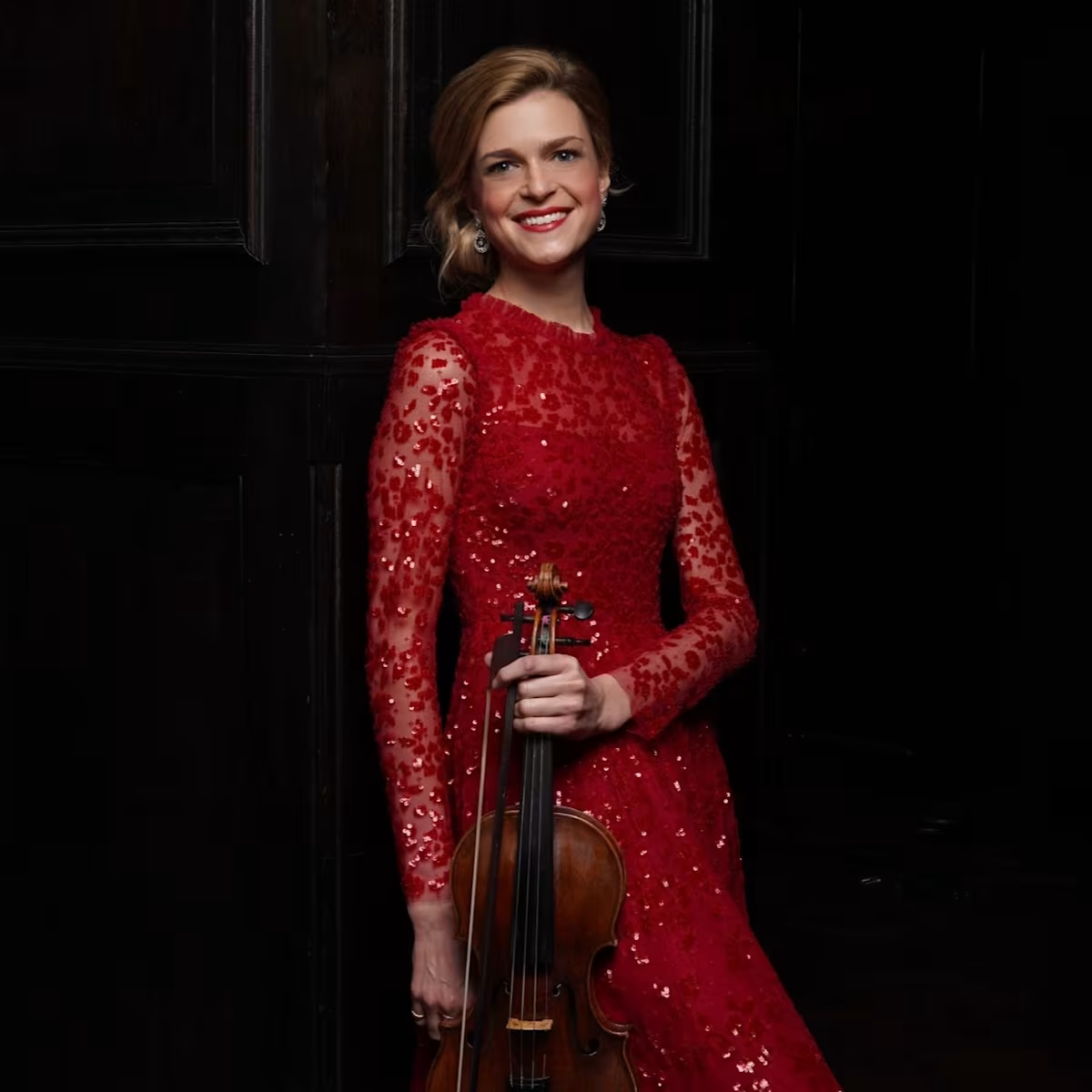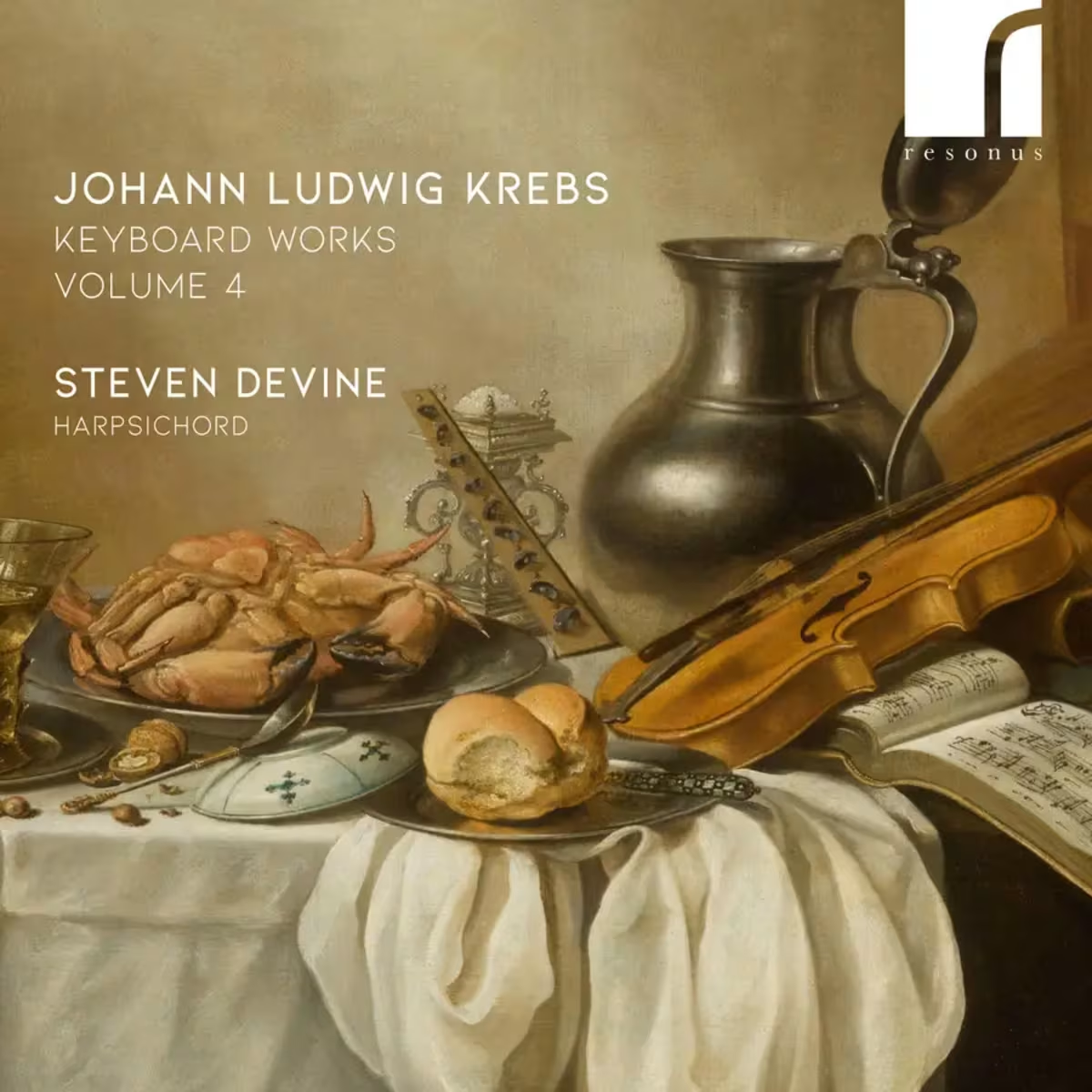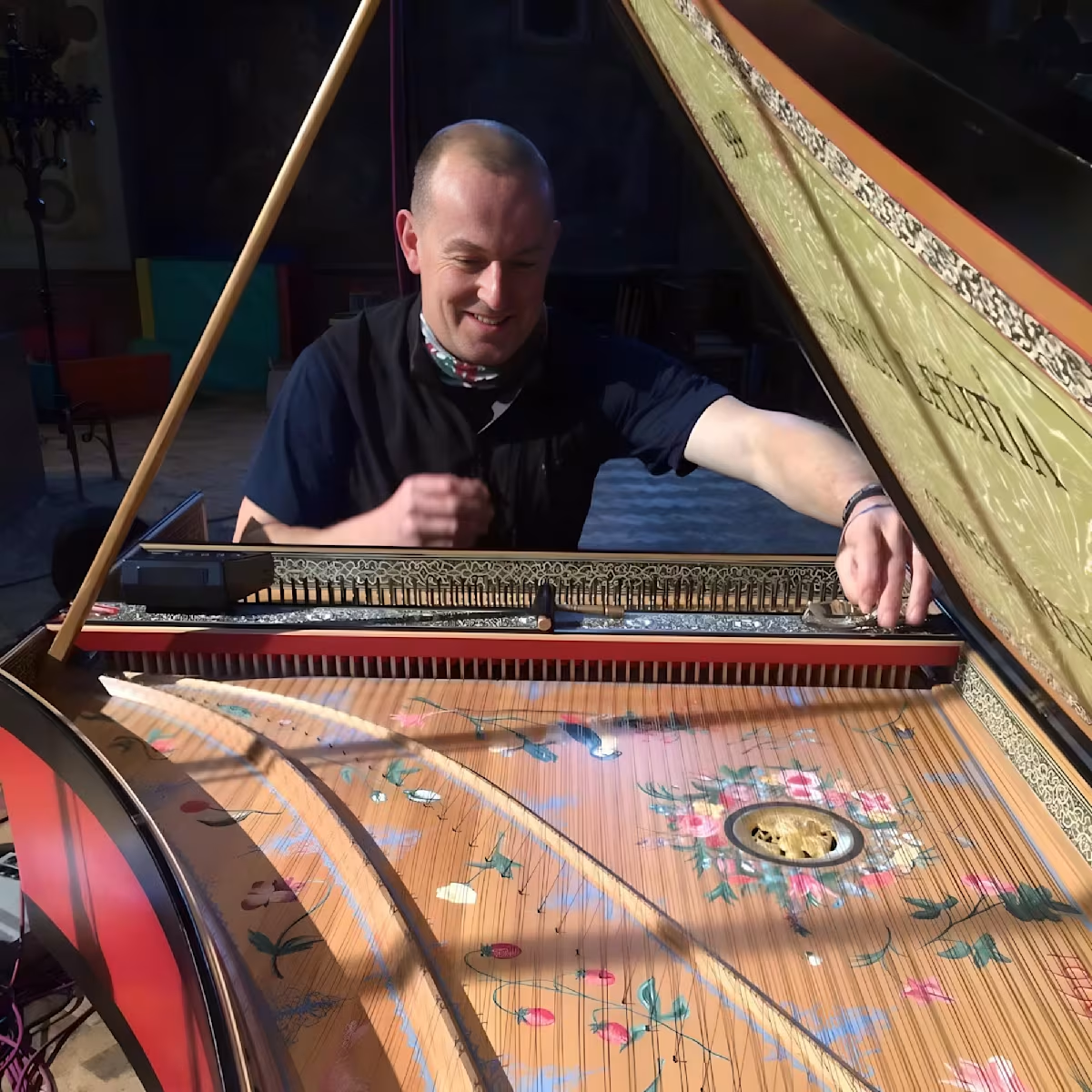Recording
The Madrigal Reimagined
The Monteverdi String Band, soprano Hannah Ely, renaissance lute and theorbo player Toby Carr with violinist and director Oliver Webber.
Share this

Diminutions is a word that crops a lot in the notes for the new recording, supported by Continuo Foundation, by the Monteverdi String Band. As director and violinist Oliver Webber explained, this does not mean making the music smaller and quieter; in fact the opposite, if that's not too confusing. "It means making the note length smaller, so you get more of them in the same time." Less means more! They are at the heart of the re-imagining undertaken here. Performers (who were often notable composers themselves) showed off their prowess in the decorations and ornaments they brought to the bare bones of the music, which were often all that they had in front of them on the page. This, of course, remained the norm in music, probably up until the gramophone taught audiences to expect exactly what they were used to in a Beethoven concerto and nothing more. Beethoven himself, like Mozart, tended to make up the solo part as he went along.
Oliver Webber and the group are not taking liberties to that extent. Instead, in several of the tracks they are presenting the original works with diminutions by other performer-composers of roughly the same period, perhaps a generation after. Cipriano di Rore's (c. 1515 - 1565) Anchor che col partiere is presented as a lute solo with 'lute intabulation' by Emmanuel Adriaenssen (c.1540 to 1604). Then the same piece is given in its original song form with soprano Hannah Ely inserting diminutions by Giovanni Battista Bovicelli (1545-1618). The next track, Vergine Bella, is played by just violin and lute, the diminutions by Orazio Bassani (d.1615) and Oliver Webber himself (b. 1969 and very much still with us). Webber also provides that service for Palestrina's Vestiva i colli.
Some of the works they present are unaugmented by credited diminutions but there is still ornamentation, just not to the extent of it becoming a topic for notice in its own right. The presence of the contributions by the secondary composers goes to prove the point that the madrigal is and always has been a vehicle for musical re-imagining. That is inherent in the form - not of the music but of the poetry - because the madrigal was above all a poetic construction that composers very quickly realised was perfect for their purposes. Oliver Webber refers to a lecture on the form at the Florentine Academy in 1577 by one of the poets involved in the Camerata that conjured up opera a few years later. Giovanni Battista Strozzi was part of the family that had been feuding but also intermarrying with the Medici for over a century by that point. In the periods when they were on the losing end, various members had ended up in France (and even Scotland) and Giovanni had cousins in Venice, the granddaughter of one of whom, Roberto, became the great composer Barbara Strozzi.
Giovanni described the madrigal as having no fixed rhyme or structure and was a form ideally suited to love and pastoral poems, rather than epic: a charming verse that also carried a bit of sparkle (frizzante). For composers this made it infinitely malleable and that malleability gives permission to musicians to play with the form in any way that keeps the spirit of the original.
"About ten years ago," says Oliver Webber, "I started working on madrigals and wondering about their definition. I realised that they all started with the text. If you went to the opera in the 17th century, the big name, the top billing, was the poet's, not the composer's." These days the only poet who gets that is W.S. Gilbert - Gilbert & Sullivan, not the other way round. We do not say Hofmannstal and Strauss, Boito and Verdi, or even Hammerstein and Rogers. "The audiences of the time would know the words and all the references in a way we don't catch. A while ago we did a sort of reconstruction of Monteverdi's Il Combattimento di Tancredi e Clorinda and we found a book from about 1620 explaining what a Venetian nobleman should be able to know. It included an enormous range of literature, ranging from the classics right up to Ariosto and Tasso. They would have recognised the allusions instantly."
The freedom of the madrigal form enabled composers to use their skill at setting these poems to give the emerging opera more light and shade. Webber says that many years ago Robert Hollingworth (I Fagiolini) and Andrew Parrott (Taverner Consort) pointed out to him that it was Monteverdi's expertise in setting madrigals that made Orfeo so interesting - and it is excerpts from that with which Webber closes the disc.

There is flexibility also in terms of size. The Monteverdi String Band engaged for this exploration is a quintet: Webber and Theresa Caudle playing violin, Wendi Kelly contralto viola, David Brooker tenor viola and Mark Caudle bass violin, with Toby Carr as lutenist. "In England," Webber says, "playing Italian madrigals in a chamber and domestic setting with no text was widespread and that set me off on a different path of investigating the possibilities". Once they were published at the time, the works became adaptable outside their original contexts and, as well as relatively intimate madrigals, Webber includes pieces that were once used for very grand occasions, for example O che nuovo miraculo by Emilio de' Cavaliere (1550-1602), which is taken from the 1589 Intermedii, written for the marriage in Florence of Christine of Loraine to Fernando de' Medici.
Webber and his violist wife Wendi founded the Monteverdi String Band because "we were quite often playing in things like the Monteverdi Vespers with crack teams of cornetts and sackbuts who could do all the ornamentation and arrived with it already worked out and sorted. We wanted as string players to come to performances as a well-matched crew like them." The band is mostly the core quintet, "but it can grow if needed, like it has here with lute and voice. Hannah Ely has been such a delight to work with. Her blend is so satisfying and I hope you can hear the way we wind around each other."
He says, "I love programming, especially when I can explore the links between literature, science and music." He has programmes for just Hannah, lutenist Toby and himself but the next project he has in mind is bigger. "We are looking at a programme built around Passiontide for soprano, bass, the String Band and continuo - the full gamut of the ensemble - and I'm really excited."
The Madrigal Reimagined album, with Hannah Ely, Toby Carr, Monteverdi String Band and Oliver Webber was supported by Continuo Foundation and is available to order from Resonus Classics and on all major streaming services.
Author: Simon Mundy
This project was supported by a grant from Continuo Foundation
Supported by Continuo Foundation
Share this
Keep reading

Davina Clarke: Violins, Voices and Collaboration
Davina Clarke shares her passion for Baroque music, collaboration, leading ensembles, and exploring the art of obligato violin in her recordings.

Johann Ludwig Krebs: Keyboard Works
Steven Devine has recorded the complete keyboard works by Johann Ludwig Krebs with a number of world premiere recordings.

In conversation: Andrew Wooderson
Continuo Connect meets maker and supplier of early keyboard instruments, Andrew Wooderson, who has a passion for fine craftsmanship.





